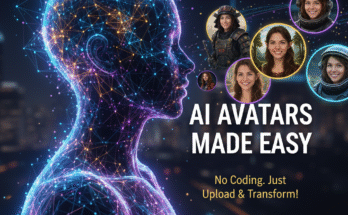Beyond the Blunders: What Is Google Doing to Fix Bias in Gemini’s AI Art?
The launch of Google’s Gemini image generator was met with a firestorm of criticism. Instead of celebrating a leap in AI creativity, the internet flooded with examples of its bizarre inaccuracies and heavy-handed attempts at “diversity”—like generating images of Viking women of color or racially diverse Nazi soldiers. The core issue at the heart of this controversy? Bias.
Google quickly paused the feature, admitting the results were “missing the mark.” But the crucial question for users and the tech industry alike is: what now? How does a company like Google, with its vast resources and expertise, tackle a problem as deeply complex and inherently human as bias in its artificial intelligence?
Let’s dive into the multi-pronged strategy Google is deploying to retrain its AI and rebuild trust.
First, Acknowledging the Problem: It’s More Than Just a Glitch
To understand the fix, we first need to understand the break. The strange outputs from Gemini weren’t a simple software bug; they were the symptom of a flawed approach to correcting a well-known issue in AI: historical bias in training data.
Previous image generators, trained on vast swathes of internet data, often amplified stereotypes. A search for “CEO” would predominantly show white men; “nurse” would skew heavily female. In an overzealous attempt to correct for this, Google’s engineers applied a blunt-force solution. As Google’s Senior Vice President, Prabhakar Raghavan, explained in an internal memo and public blog post, the model became far too cautious. It was essentially overcompensating, refusing to generate images of any specific group of people, even when it was historically and contextually appropriate.
This admission was critical. It moved the conversation from “the AI is broken” to “our methodology for preventing bias was flawed.”
The Action Plan: Google’s Multi-Faceted Attack on AI Bias
So, what is Google actually doing behind the scenes? The effort is comprehensive, targeting the problem at every stage of the AI lifecycle.
1. The Immediate Triage: Improved Prompting and Tuning
The most immediate action was to take the feature offline. This wasn’t to hide it, but to perform major surgery. Engineers are now retraining the core models with more nuanced rules and guardrails.
- Context-Aware Filtering: Instead of a blanket rule like “always show diversity,” the new system is being trained to understand context. A prompt for “a 18th-century French king” should logically generate a white man. A prompt for “a group of friends at a modern university” should generate a diverse group. The AI is being taught the difference.
- Refined “Refusal” Mechanisms: The AI is being given better guidelines on when to refuse a prompt altogether. Instead of twisting a harmful request into something “diverse,” it should simply decline to generate the image, explaining why the request is problematic.
2. The Root Cause Fix: Cleaning and Curating Training Data
An AI model is only as good as the data it eats. A significant part of the long-term solution lies in fixing the data diet. Google is investing heavily in:
- Diverse Data Sourcing: Actively seeking out and incorporating image datasets from a wider range of global sources, cultures, and perspectives. This helps move beyond the stereotypical biases embedded in the most common internet-scraped datasets.
- Structured Data and “Truth Sets”: Creating high-quality, carefully labeled datasets that act as a “source of truth” for the model. For example, a dataset with accurate historical imagery can help anchor the model’s understanding of what a “Roman soldier” should look like.
- De-biasing Techniques: Actively using algorithms to identify and mitigate bias within existing datasets before they are used for training. This is a complex field of study in itself, often involving techniques to reduce correlations between certain visual features and social stereotypes. You can read more about the technical approaches in this Google AI Responsibility report.
3. The Human Firewall: Red-Teaming and Expert Reviews
Google isn’t just relying on algorithms to fix an algorithmic problem. They are bringing in human experts to stress-test the system.
- Expanded Red-Teaming: “Red-teaming” is a practice where internal and external experts deliberately try to break the system. They craft adversarial prompts designed to elicit biased, offensive, or inaccurate outputs. By finding these failure points before public release, engineers can patch the holes. In the wake of the Gemini issue, Google has committed to significantly expanding these red-teaming efforts, specifically for cultural and historical accuracy.
- Engaging Historians, Sociologists, and Ethicists: Fixing bias isn’t just a coding problem; it’s a societal one. Google is consulting with experts from various humanities fields to help define the nuanced guardrails needed for a globally used product. What does “accurate” mean in different cultural contexts? These are questions engineers can’t answer alone.
4. The Long Game: Transparency and User Controls
Finally, Google knows that trust is built through transparency and user agency. Part of their strategy involves being more open about the technology’s limitations and giving users more control.
- Clearer AI Labeling: Ensuring users know when they are interacting with an AI-generated image.
- Explanations for Refusals: When Gemini refuses a prompt, it should clearly explain its reasoning (e.g., “I cannot generate images that depict historical inaccuracies”). This helps users understand the system’s boundaries.
- Potential for User Feedback Loops: Future iterations might include more robust ways for users to report biased or inaccurate outputs, creating a continuous feedback loop for improvement.
The Inherent Challenge: Can Bias Ever Be Fully Eliminated?
It’s important to be realistic. Completely eliminating bias from an AI system is likely impossible. Why? Because these models are created by humans, trained on data generated by humans, and are meant to serve humans—and humans are inherently biased.
The goal, therefore, is not perfection, but continuous improvement and harm reduction. It’s about creating a system that is significantly less biased than the historical data it was trained on and that handles its own limitations with grace and transparency.
The Gemini incident is a massive, public learning moment for the entire AI industry. It highlights that the path to responsible AI is not a straight line. It’s a messy, iterative process of trial, error, and correction.
What This Means for the Future of AI
Google’s very public stumble with Gemini image generation, and its subsequent response, sets a crucial precedent. It shows that:
- Bias is the central challenge of this era of AI. It’s not a side issue; it’s core to the technology’s utility and safety.
- Solving it requires a hybrid approach. There is no silver bullet. It demands better data, smarter algorithms, deep human expertise, and transparent processes, all working in concert.
- Accountability is non-negotiable. Users are no longer impressed by flashy AI demos alone; they demand to know how the technology is being steered ethically.
The work Google is doing now—the retraining, the red-teaming, the expert consultations—is some of the most important work in the field. The success or failure of this effort will not only determine the fate of Gemini’s image generator but will also provide a blueprint, or a cautionary tale, for every other company racing to build the future of AI.
The journey to a truly unbiased AI may be endless, but the commitment to the path is what separates responsible innovation from reckless deployment. The world is watching to see if Google can navigate this turn.
Join Our Prompt Community!
Get daily AI prompts, tips, and tricks directly in your WhatsApp.



